
Mark Lucas
609
3801
18
Obtenir un emploi n'est pas facile en ces temps difficiles. Les bons conseils peuvent vous faciliter la tâche, que ce soit pour rédiger votre CV ou pour répondre à une question difficile. Laissez les experts de LinkedIn vous aider.
LinkedIn est la première étape pour vous connecter avec des personnes pour votre prochain emploi. Vous pouvez également créer votre CV avec ce CV Builder: Créez un CV à partir de votre profil LinkedIn CV Builder: Créez un CV à partir de votre profil LinkedIn. Mais une partie du réseau social souvent négligée est la richesse des informations partagées par des professionnels accomplis. L'application Pulse de LinkedIn facilite la découverte d'actualités professionnelles LinkedIn s'intègre à Pulse pour l'agrégation de nouvelles professionnelles, le partage social LinkedIn s'intègre à Pulse pour l'agrégation de nouvelles professionnelles, le partage social LinkedIn s'est désormais fortement intégré à Pulse pour lancer un nouveau moyen de consommer des actualités professionnelles sur mobile et ordinateur de bureau, en remplacement de l'actuel LinkedIn Today. , avec beaucoup de contenu écrit par les influenceurs de LinkedIn. Voici qui vous devriez suivre si vous êtes actuellement sur le marché du travail.
Bloc Laszlo
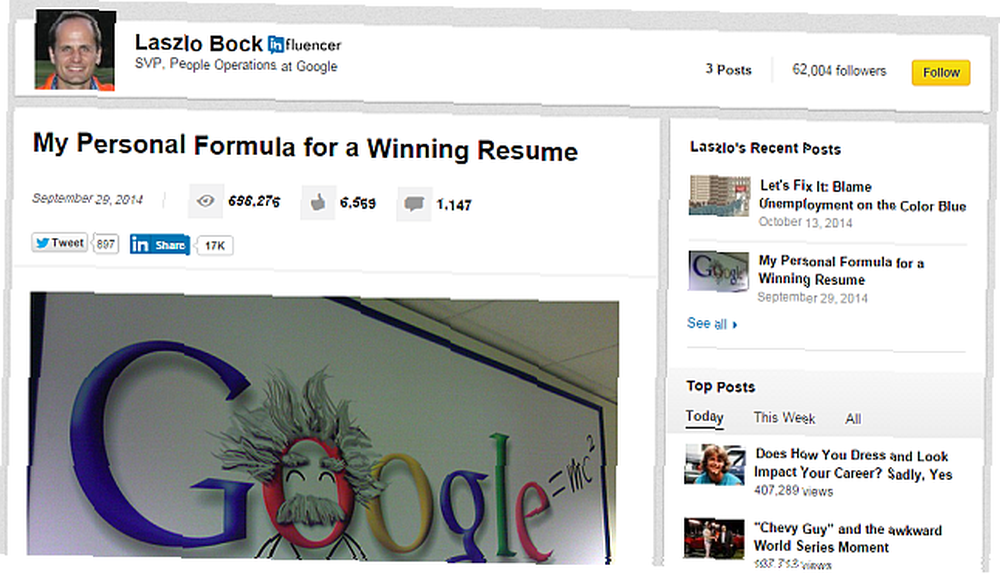
Commençons par le grand, Laszlo Block, premier vice-président des opérations liées aux personnes chez Google. Un gars qui s'occupe de l'embauche dans l'une des entreprises les plus recherchées au monde connait bien son curriculum vitae. À ce jour, Block n’a publié que trois messages, mais tous sont récents et sont devenus viraux, il en rédigera probablement davantage. Même si non, ces trois valent leur pesant d'or.
Meilleur post: Ma formule personnelle pour un CV gagnant
Suivre: Suivez Laszlo Block et voyez tous ses messages
Liz Ryan
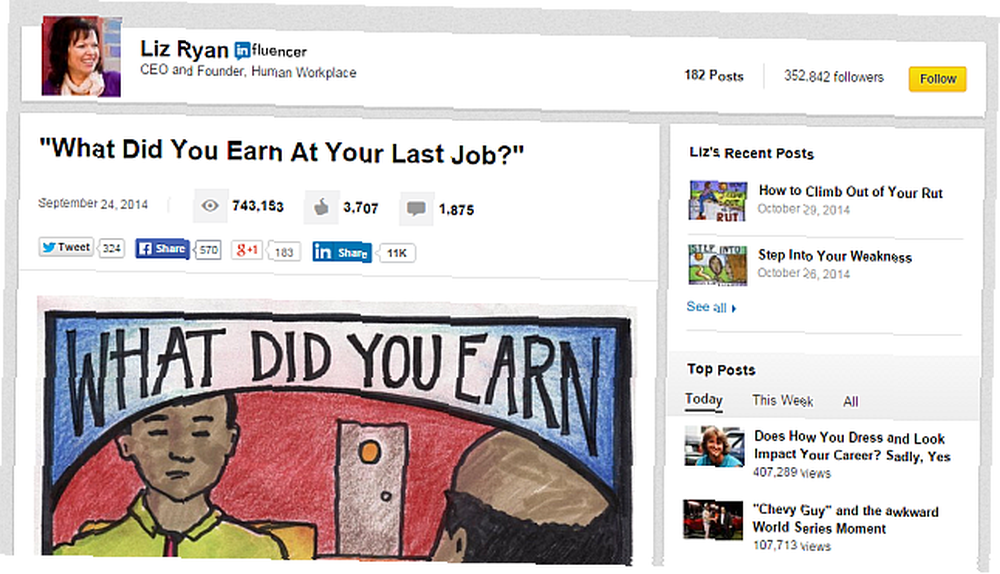
Si les illustrations géniales de Liz Ryan ne vous donnent pas envie de la suivre, ses idées le feront certainement. Le PDG et fondateur de Human Workplace, une entreprise de coaching de carrière, vous donne des conseils sur chaque étape de votre emploi, de la recherche d'emploi à l'entretien en passant par l'entrevue. De plus, Ryan publie souvent des conseils pour les recruteurs, que vous pouvez utiliser pour comprendre comment l’autre côté de la table pense.
Meilleur post: “Qu'avez-vous gagné lors de votre dernier emploi??”
Suivre: Suivez Liz Ryan et voir tous ses messages
Lisa Gates
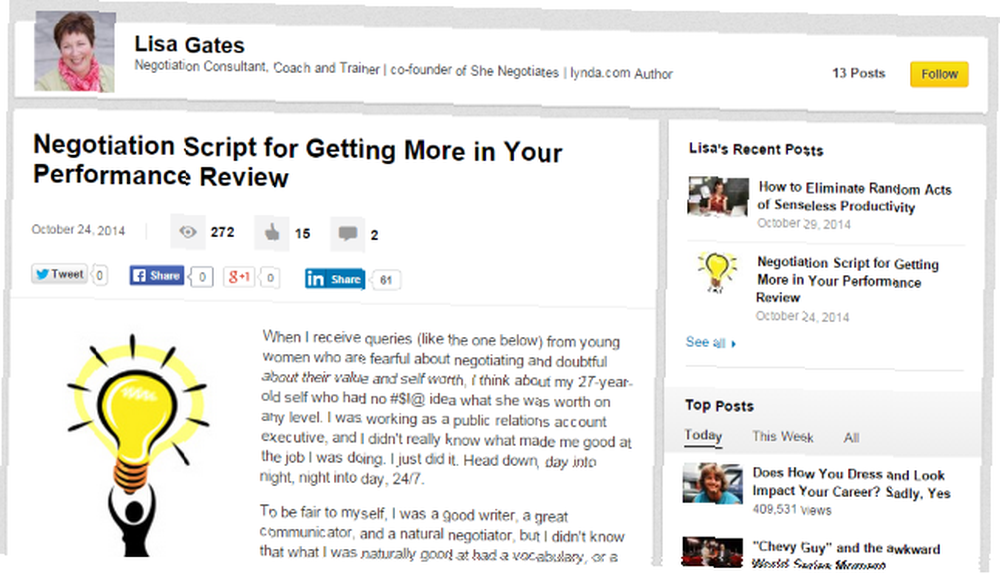
Négocier votre rémunération et vos avantages est une partie importante du processus d’entretien. Pour réussir, suivez les conseils de Lisa Gates, coach en négociation et cofondatrice de She Negotiates. Gates offre des conseils de carrière génériques, ce qui est également utile, mais la négociation est son fort.
Meilleur post: Script de négociation pour obtenir plus dans votre analyse de performance
Suivre: Suivez Lisa Gates et voir tous ses messages
Meg Guiseppi
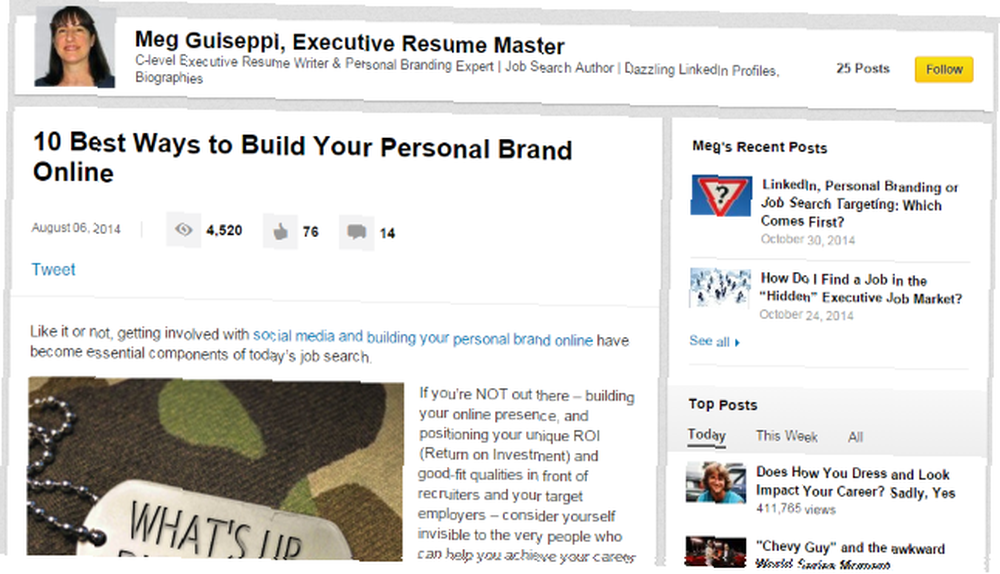
Les dirigeants ont tout autant besoin d'aide pour trouver un emploi, et Guiseppi est là pour répondre à ces besoins. Guiseppi est un écrivain de curriculum vitae et un expert en stratégie de marque personnelle, mais ses conseils sont généralement plus universels que les cadres qu’il vise. En outre, elle partage plusieurs conseils sur la mise en réseau, une étape cruciale pour obtenir cet entretien et sur la meilleure utilisation de votre profil LinkedIn..
Meilleur post: 10 meilleures façons de créer votre marque personnelle en ligne
Suivre: Suivre Meg Guiseppi et voir tous ses messages
Jeff Haden
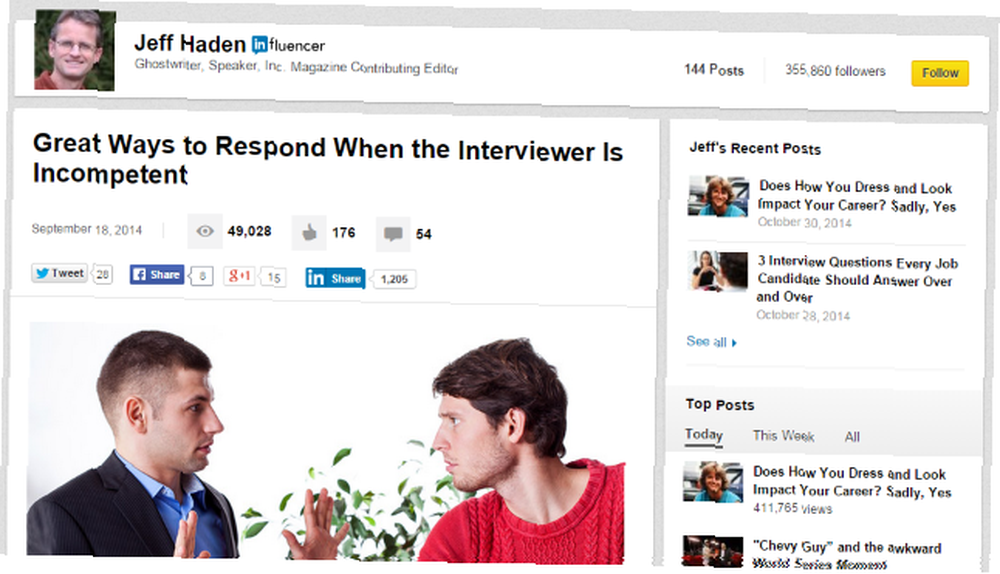
Jeff Haden, rédacteur collaborateur du magazine Inc., écrit sur la culture d'entreprise, qui se concentre souvent sur les recherches d'emploi, les curriculum vitae, les entretiens, etc. Haden regorge de conseils sur les questions et réponses pour les entretiens d'embauche. 8 sites Web pour obtenir des conseils sur les questions et les entretiens d'embauche. 8 sites Web pour obtenir les conseils sur les questions et les réponses d'entrevue d'emploi. Assurez-vous donc de le lire avant le grand jour..
Meilleur post: Excellentes façons de réagir lorsque l'intervieweur est incompétent
Suivre: Suivez Jeff Haden et voyez tous ses messages
James Caan
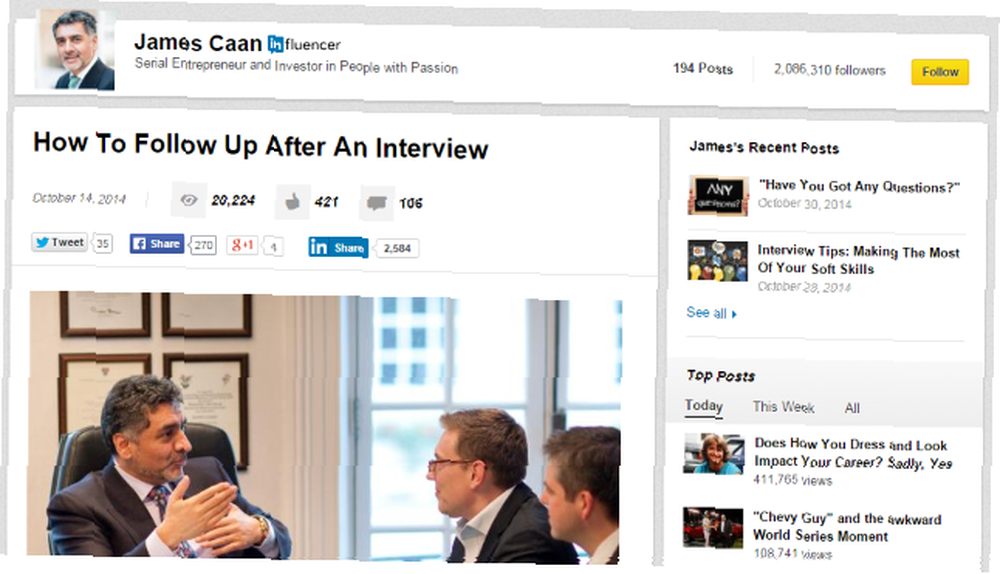
James Caan, entrepreneur et investisseur, poste sur LinkedIn avec une régularité qui fait de lui un acteur incontournable. La clarté de Caan dans la résolution des problèmes est sa meilleure caractéristique. Ses messages ne vont pas se promener partout. Au lieu de cela, il choisit un sujet et vous explique un ou plusieurs moyens pratiques et réalisables de l'aborder..
Meilleur post: Comment faire un suivi après une entrevue
Suivre: Suivez James Caan et voyez tous ses messages
Lou Adler
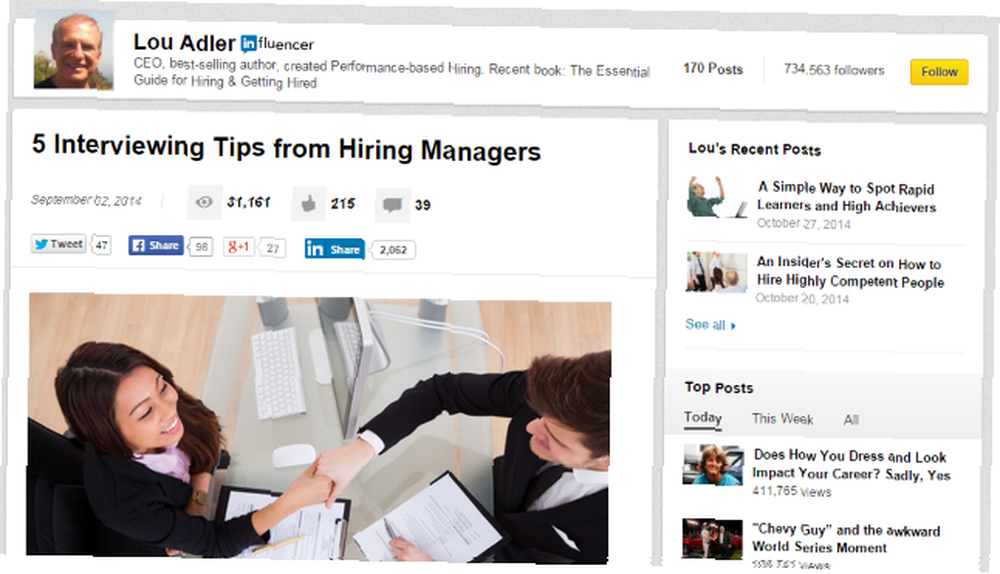
Lou Adler est l'auteur de L'essentiel Guide pour l'embauche et le recrutement. Inutile de dire que beaucoup de ses publications traitent de la recherche d’un emploi. Ses recherches approfondies auprès des responsables du recrutement et des candidats à un emploi lui permettent de se concentrer sur des conseils pratiques, plutôt que sur des réflexions génériques - bien qu'il soit coupable de philosopher de temps en temps. Mais supporte ça parce que les récompenses sont riches.
Meilleur post: 5 conseils d'entrevue des gestionnaires d'embauche
Suivre: Suivre Lou Adler et voir tous ses posts
Heather Huhman

Les conseils de Heather Huhman, experte des carrières de la génération Y, conviennent le mieux à la nouvelle main-d'œuvre, en particulier aux personnes occupant un premier ou un deuxième emploi. Il ne s’agit pas seulement du processus d’embauche car Huhman traite également de problèmes liés au milieu de travail, mais ses articles sur la recherche d’emploi sont complets et pleins de bons conseils..
Meilleur post: 5 façons sans faille de négocier votre premier salaire
Suivre: Suivez Heather Huhman et voir tous ses messages
Marc Miller
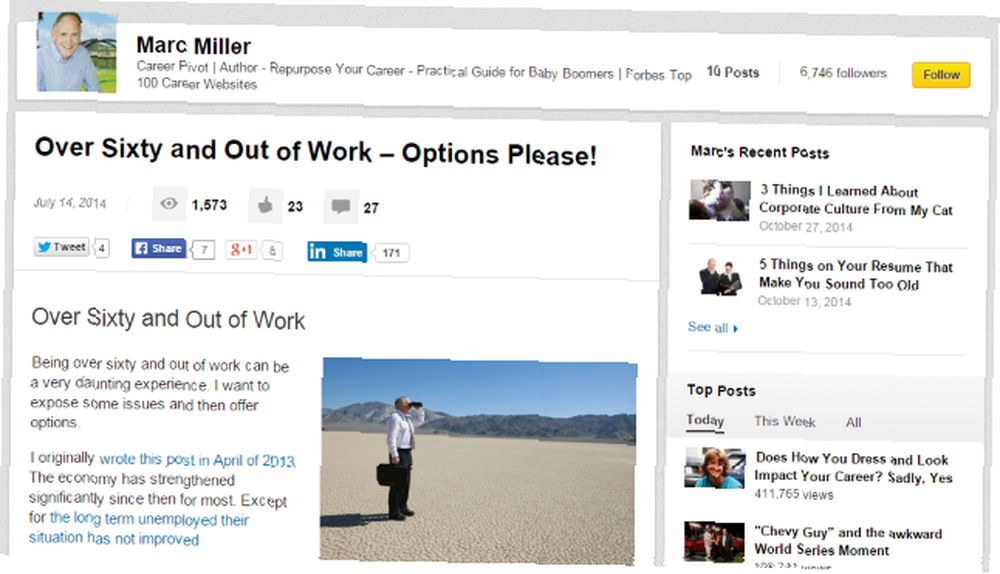
Alors que le public de Huhman est jeune, Marc Miller a littéralement écrit le livre sur la recherche d’emploi pour les personnes âgées: Réorganisez votre carrière: un guide pratique pour les baby-boomers. Les conseils de Miller pourraient toujours s'appliquer à la nouvelle génération, mais ils conviennent mieux à ceux qui sont déjà bien implantés sur le marché du travail..
Meilleur post: Plus de soixante ans et sans emploi - Options Please!
Suivre: Suivez Marc Miller et voyez tous ses messages
Paul Freiberger
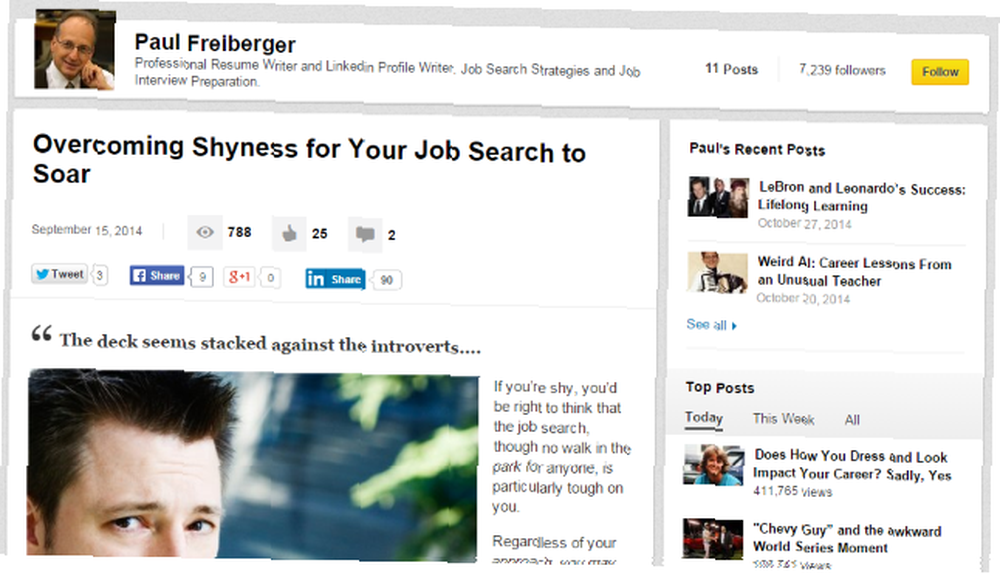
Si quelqu'un se décrit en tant que rédacteur professionnel de CV et rédacteur de profil LinkedIn, vous feriez mieux de le suivre avant de commencer votre recherche d'emploi. Freiberger n'a pas écrit beaucoup d'articles, mais le conseil diffère de ce que vous obtenez habituellement: qualité supérieure à quantité..
Meilleur post: Surmonter la timidité de votre recherche d'emploi
Suivre: Suivre Paul Freiberger et voir tous ses messages
Qui suivez-vous pour obtenir des conseils??
Armé de ces conseils, vous devriez être prêt à faire face à votre recherche d'emploi à l'ère d'Internet. Comment gérer votre recherche d'emploi à l'ère d'Internet Comment faire face à votre recherche d'emploi à l'ère d'Internet Un travail qui aurait pu être obscur est maintenant un seul Craigslist postant des dizaines, voire des centaines d’applications. Pour vous démarquer, vous devrez affiner votre tactique - ancienne et nouvelle. . Alors dites-nous, avez-vous des astuces sur LinkedIn pour vous aider dans votre chasse?? Tous les influenceurs LinkedIn préférés vers lesquels vous vous adressez à des publications?
Crédit d'image: Flazingo Photos











